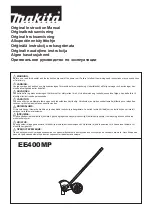
Acquisition
To position the waveform appropriately, Autoset may change the vertical position. Autoset may also adjust vertical offset.
If you use Autoset when one or more channels are displayed, the instrument selects the lowest numbered channel for
horizontal scaling and triggering. You can individually control the vertical scaling of each channel.
If you use Autoset when no channels are displayed, the instrument turns on channel one (Ch 1) and scales it.
Close Autoset Undo control window by clicking the X. After Autoset Undo closes, you can still undo the last Autoset by
selecting the Undo Last Autoset command from the Edit menu.
Stop the Autoset Undo control window from opening automatically by changing the User Preferences in the Utilities menu.
Probe compensation and deskew
To optimize measurement accuracy, see the instrument online help to perform the following procedures:
Compensate passive probes
Compensate active probes
Deskew input channels
Acquisition concepts
Acquisition hardware
Before a signal is displayed, it must pass through the input channel where it is scaled and digitized. Each channel has a
dedicated input ampli
fi
er and digitizer. Each channel produces a stream of digital data from which the instrument extracts
waveform records.
Sampling process
Acquisition is the process of sampling an
analog signal, converting it into digital data,
and assembling it into a waveform record,
which is then stored in acquisition memory.
Real-Time sampling
In real-time sampling, the instrument digitizes
all of the points it acquires using one trigger
event. Use real-time sampling to capture
single-shot or transient events.
MSO/DPO70000DX, MSO/DPO70000C, DPO7000C, and MSO/DPO5000B Series User Manual
37
















































